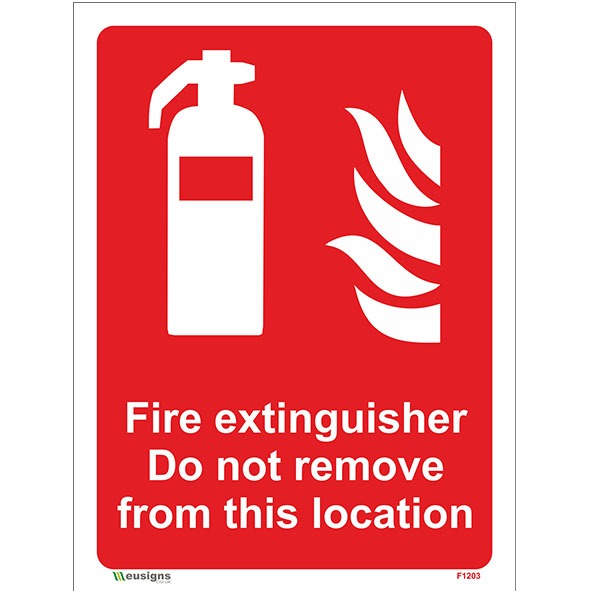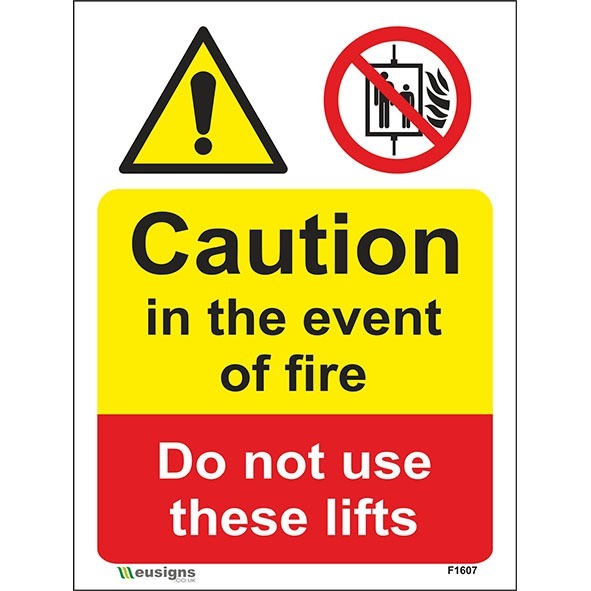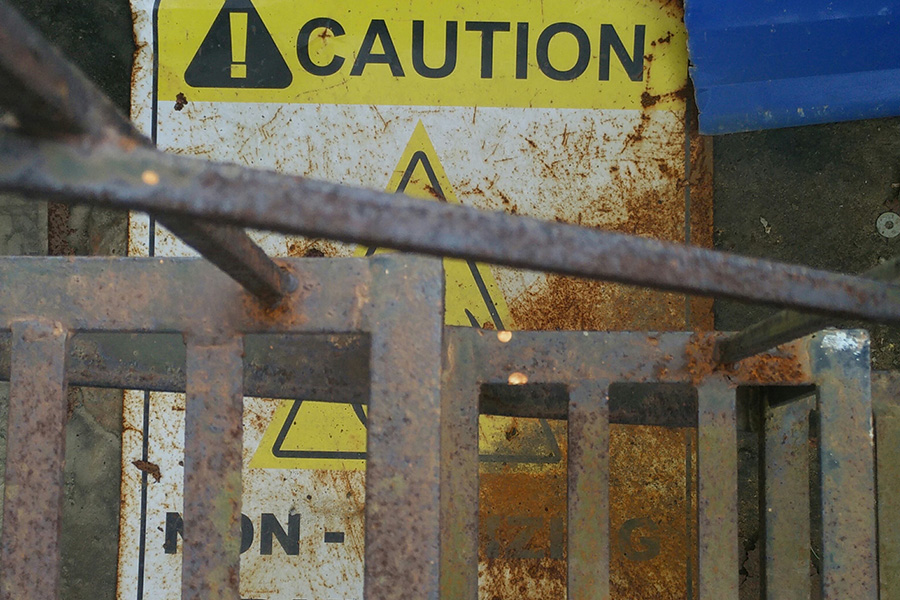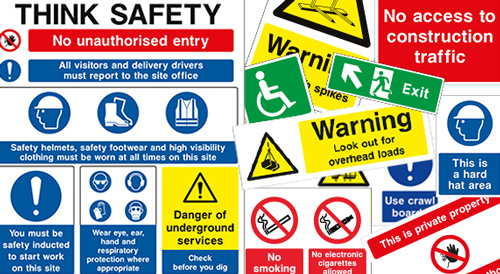Category: Fire Signs
Fire Signs: A Vital Part of Workplace Safety and Legal Compliance

Fire signs are a legal and practical necessity in any workplace or public building in the UK. These signs are not merely visual markers; they are carefully designed tools that support fast decision-making during emergencies, particularly fires. When a fire breaks out, people need to respond immediately. There is no time for confusion or uncertainty. Fire signs offer the clarity required to direct individuals to the nearest fire exit, indicate the location of fire extinguishers, or instruct on the steps to take in case of an alarm. Their role becomes even more crucial in smoke-filled or low-light environments, where visibility is compromised. Photoluminescent options, for instance, remain visible in darkness, allowing safe evacuation even during power failures. Moreover, the consistency of symbols used in these signs, standardised under BS 5499 & EN ISO 7010, ensures that no matter the language spoken by a building occupant, the message is universally understood. Compliance isn’t optional. Businesses have a duty of care to their staff and visitors, and fire signs are a key part of that responsibility.
Understanding the Role of Fire Signs in Emergency Situations

When an emergency strikes, panic spreads faster than the fire itself. The presence of clear, well-positioned fire signs plays a vital role in preventing chaos. These signs reduce hesitation and help occupants make life-saving decisions in seconds. Fire signs include a variety of formats, from directional arrows pointing to fire exits, to location indicators for fire extinguishers, hose reels, and call points. While installing fire alarms and sprinkler systems is important, the truth is that without visible signage guiding people to safety, these systems are incomplete. Think of fire signs as the human interface of your emergency plan. Their value extends beyond fire evacuation alone. They support routine fire drills, familiarise staff with building layouts, and reinforce training. The psychological impact of visible safety signage is also worth noting. Employees working in an environment with prominent fire safety information feel more secure and supported, which in turn boosts morale and compliance. Additionally, fire signs are a crucial visual aid for emergency services. Upon entering a building, firefighters can use them to navigate, assess risks, and locate equipment more efficiently. For those managing multi-use buildings or large industrial spaces, coordinating signage across different zones can ensure seamless navigation during a crisis. For further workplace safety coverage, we recommend integrating Emergency Exit Signs, Information Signs, and Mandatory Signs alongside your fire safety strategy.

UK Legal Requirements: Are You Fully Compliant?
UK law makes it clear: if you own or manage a building, it’s your legal obligation to ensure it’s equipped with compliant fire signage. The Regulatory Reform (Fire Safety) Order 2005 states that signs must be used where necessary to indicate emergency exits, firefighting equipment, and fire alarm activation points. That means it’s not just a matter of good practice—it’s a statutory duty. Additionally, all fire safety signs must follow BS 5499 & EN ISO 7010 design standards, which specify colours, symbols, and proportions. These standards ensure visual consistency across all buildings in the UK, allowing even unfamiliar visitors to quickly understand where to go and what to do in case of fire. One frequent issue businesses face is outdated signage. Changes to floor layouts, office renovations, or even new fire doors can render existing signs obsolete. This is why fire risk assessments are required and must be updated regularly. If your signage fails to reflect the actual layout of the premises, it becomes a liability. Non-compliance carries serious consequences, including enforcement notices, fines, insurance complications, and even prosecution. Worse yet, it puts lives at risk. Fire signs aren’t an optional extra, they’re a cornerstone of your legal duty to protect people. For guidance on how to carry out proper signage updates, visit the official government legislation at legislation.gov.uk.
Penalties and Risk of Non-Compliance
Non-compliance with fire signage laws is not just a minor infraction, it can result in criminal prosecution, particularly if your negligence leads to harm. The Health and Safety Executive (HSE) and local fire authorities have the power to inspect buildings and enforce compliance. If an inspector finds your signage inadequate, they may issue an improvement notice, prohibition order, or even initiate legal action. Fines for breaches can range from hundreds to tens of thousands of pounds depending on the severity of the risk posed. In extreme cases, business owners have faced prison sentences under corporate manslaughter laws when preventable deaths occurred due to inadequate fire safety measures. It’s also important to consider insurance implications. Many business insurance policies include clauses requiring adherence to fire safety regulations. If you fail to comply and a fire occurs, your insurance company could refuse to pay out. That alone is reason enough to act. Protecting lives is the priority, but protecting your business assets and continuity also matters. For maximum safety and peace of mind, make sure your fire safety setup includes both fire signs and supporting categories like Hygiene Signs and CCTV in Operation Signs to reinforce control and visibility during emergencies.
Types of Fire Safety Signs and Their Strategic Placement
Not all fire signs serve the same purpose. In fact, one of the most common mistakes businesses make is assuming that a few generic fire exit signs are enough. Fire safety signage is a broad category encompassing several distinct sign types: each with its own function and placement rules. For example, fire action notices give specific instructions on what individuals should do if a fire is discovered. These are usually placed near alarm points and exit doors. Extinguisher ID signs identify the type of extinguisher present and its appropriate use, preventing misuse during high-pressure moments. Directional fire exit signs guide people to safety, often incorporating arrows and standard running-man symbols. Other signs highlight fire hose reels, fire blankets, and dry riser inlets. Strategic placement is key. Signs should be at eye level, evenly spaced along exit routes, and free of obstructions. Photoluminescent signs are especially useful in areas prone to power failure or smoke buildup. When assessing your needs, consider the unique layout of your building, occupancy type, and typical lighting conditions. For more complex premises, fire signage should be planned alongside your fire alarm and emergency lighting systems. Proper sign placement is just as critical as having the signs in the first place. And always remember, regular reviews and updates are essential. For a complete range of approved signage types, browse our Fire Signs category.
BLOG CATEGORIES
- Banners (3)
- Commercial Signs (19)
- Corporate Responsibility (7)
- EU Signs News (26)
- Fire Signs (4)
- Flat Cut Letter Signs (11)
- Health & Safety Signs (46)
- Health and Safety (33)
- Hoarding Signs (1)
- Shop Front Signs (2)
- Uncategorised (1)
- Vehicle Graphics (16)
- Window Graphics (4)


